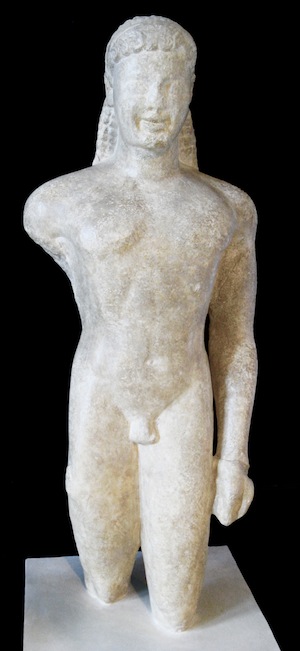Archaic Greek Sculpture

Kouros of Paros
Archaic Greek
replica: from the Louvre, Paris
date of the original: mid-6th century BC
provenance of the original: the island of Paros; now in the Louvre, Paris
description: Standing youth, arms at sides, left leg forward. Destroyed below the knees, right arm missing below shoulder. Left arm and right hand restored. Plaster replica; marble original. On base: height 129 cm, width 36 cm, depth 39 cm.
The Kouros of Paros was named after the site of his discovery and simply designated as kouros or young man for lack of more precise information. He can be approximately dated in the mid sixth century BC, the Archaic Period, the beginning of life-size--as well as colossal and monumental--Greek statuary.
During this period, the first noticeable efforts were made to evoke life-likeness, but stylization was still the norm. This kouros is already Greek in essence, except for his stance (with left foot forward and clenched fists) which adheres to the Egyptian convention for standing figures (see: Pharaoh Psammeticus II).
However, his nudity is eminently Greek: the athlete has discarded the Egyptian loincloth. It is uncertain whether he represents a god, a worshipper’s votive statue, a winner of an athletic contest, or a funerary statue.
(See also: Kouros of Piombino.)